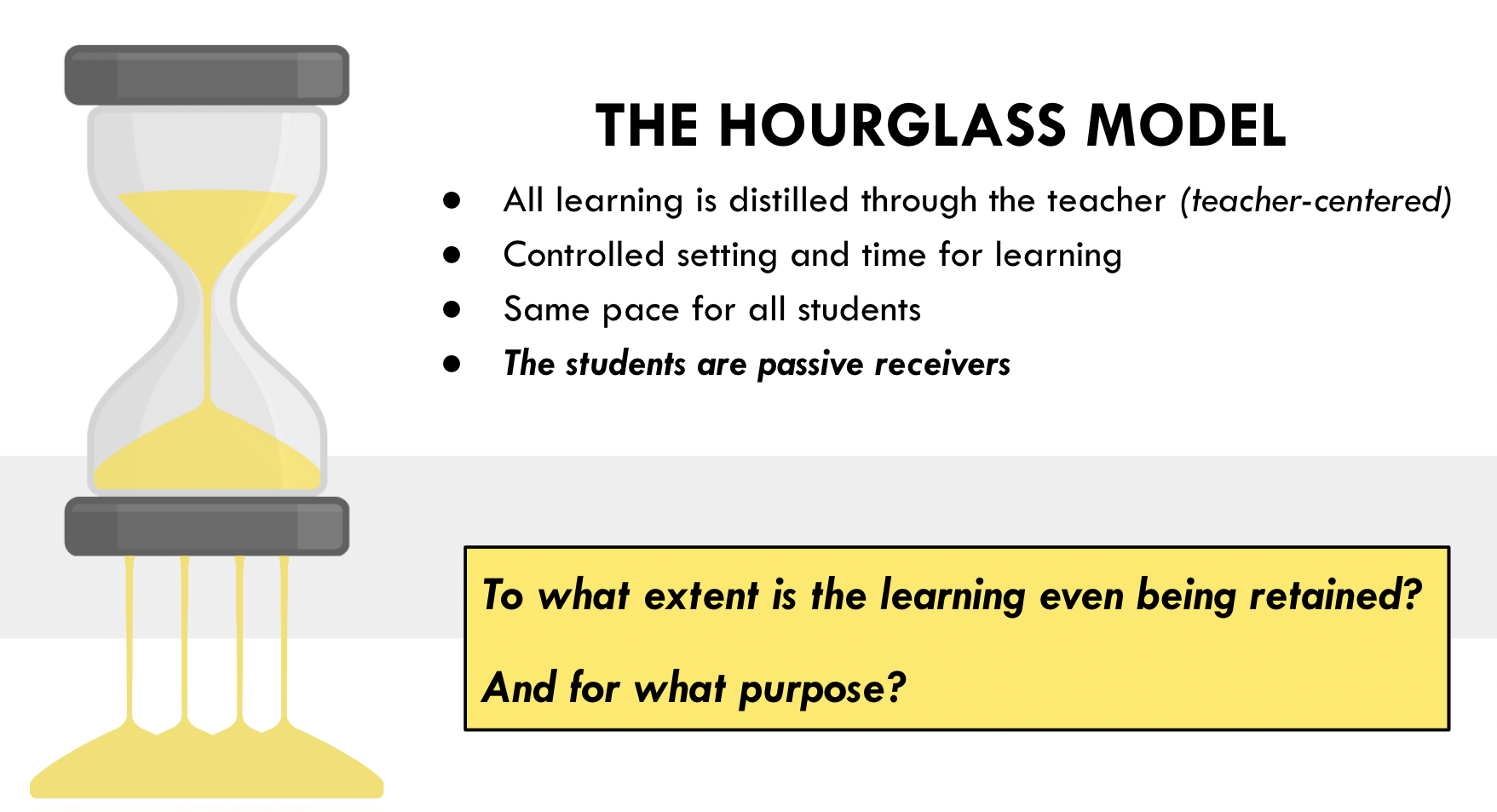From The Hourglass to The Sandbox
Before us are essentially two models of education. These primarily represent a continuum from a teacher-centered classroom to one that is student-centered. As a school leader who can help shape the path forward for your staff, which model will you choose?
First, there is The Hourglass Model, the age-old approach used in schools and classrooms around the world.
In this model, the teacher is positioned at the center of the hourglass.
All the weight, all the burden, all the responsibility for the learning is placed on their shoulders.
The texts and tests, quizzes and questions, activities and assessments are all in their hands.
In this controlled setting, they release the learning (i.e. the sand), bit by bit to the students below.
They deliver the content at the same pace for all students, limiting advanced learners and burying those that are struggling.
Down below, the students are passive receivers, simply remembering and then forgetting the content when it is no longer needed. Learning loss is literally built into the system.
What’s the purpose of this model besides just passing the class?
Next is The Sandbox Model which aligns with The Seven C’s of Learning and various other student centered pedagogies like problem-based learning, constructivism, service learning, etc.
Now rather than all of the weight being placed on the teacher’s shoulders, the teacher is a learning facilitator and the students are the primary site of the learning.
Instead of a timed and controlled setting, the learning is not bound to just the classroom and just the unit.
In the sandbox, there are spaces for collaboration and for different paces.
Some students are working together to build a castle.
Others are digging alone or learning from the ideas of their peers.
The teacher may be working with one individual or with a small group of students.
Or maybe the entire class is watching as the teacher demonstrates a technique or as a few students present what they’ve been working on.
Although there is independence in this model, there is still structure and guidance. The sandbox has bounds and is not as vast and overwhelming as the Sahara desert.
Rather, we are providing students with texts, techniques, and tools for exploring, for building, for creating, for sifting, for separating fact from fiction and objectivity from bias.
Ultimately in this model, the students are active learners and retention is dramatically improved and the purpose of their learning explicitly clear. This is the arena of student-led construction and creation.
Now think for a moment about your own school. Where do you see The Hourglass Model? With which teachers? And where do you see The Sandbox? Who are your Sandbox leaders?
What do you say we get more teachers to embrace The Sandbox Model (or elements of it) and we show them how?
At Seven C’s Learning, we make the transition to The Sandbox a smooth and exciting process, building on teachers’ strengths and expertise and inspiring them with activities and approaches that relieve the burden from their shoulders and motivate them to let the students take charge, get messy, figure it out, and build it up.
Reach out today and lead your teachers to deeper, more meaningful learning.



